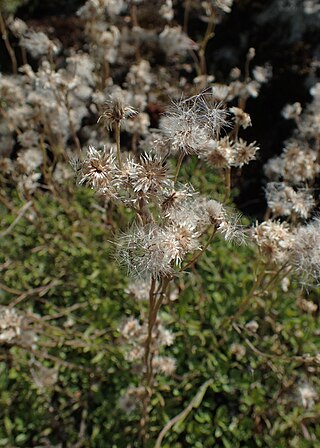Top Qs
Timeline
Chat
Perspective
Antennaria howellii
Species of flowering plant From Wikipedia, the free encyclopedia
Remove ads
Antennaria howellii, the everlasting or Howell's pussytoes,[2][3] is a North American species of plant in the family Asteraceae. It is native to northern Alaska, much of Canada including the Arctic territories, and the northern United States as far south as northern California, Colorado and North Carolina.[4]
Antennaria howellii is an evergreen perennial plant. The form is usually basal rosettes, largely clonally propagated. The basal rosette leaves are 2–4 cm long and 6–12 mm broad, light green and spatulate, with a thin arm and a broad tip with a point. They have woolly white undersides. The flowerheads appear in May, on a stem 15–35 cm tall with smaller, slender leaves 1–4 cm long. It is commonly seen growing under pine stands.[2]
- Antennaria howellii subsp. howellii – western + north-central US, western + central Canada including Yukon
- Antennaria howellii subsp. canadensis – northeastern US, eastern + central Canada including Labrador
- Antennaria howellii subsp. neodioica – Canada, northern US
- Antennaria howellii subsp. petaloidea – Canada, northern US
The plant is named for American botanist Thomas J. Howell, who collected the first known specimens of the plant in 1887.[5]
Remove ads
Conservation status in the United States
The petaloidea subspecies is listed as a special concern and believed extirpated in Connecticut.[6]
Native American ethnobotany
The Nuxalk Nation take a decoction of leaves for body pain, but not pain in the limbs.[7] The Ojibwe take an infusion of the neodioica subspecies after childbirth to purge afterbirth and to heal.[8]
References
External links
Wikiwand - on
Seamless Wikipedia browsing. On steroids.
Remove ads


